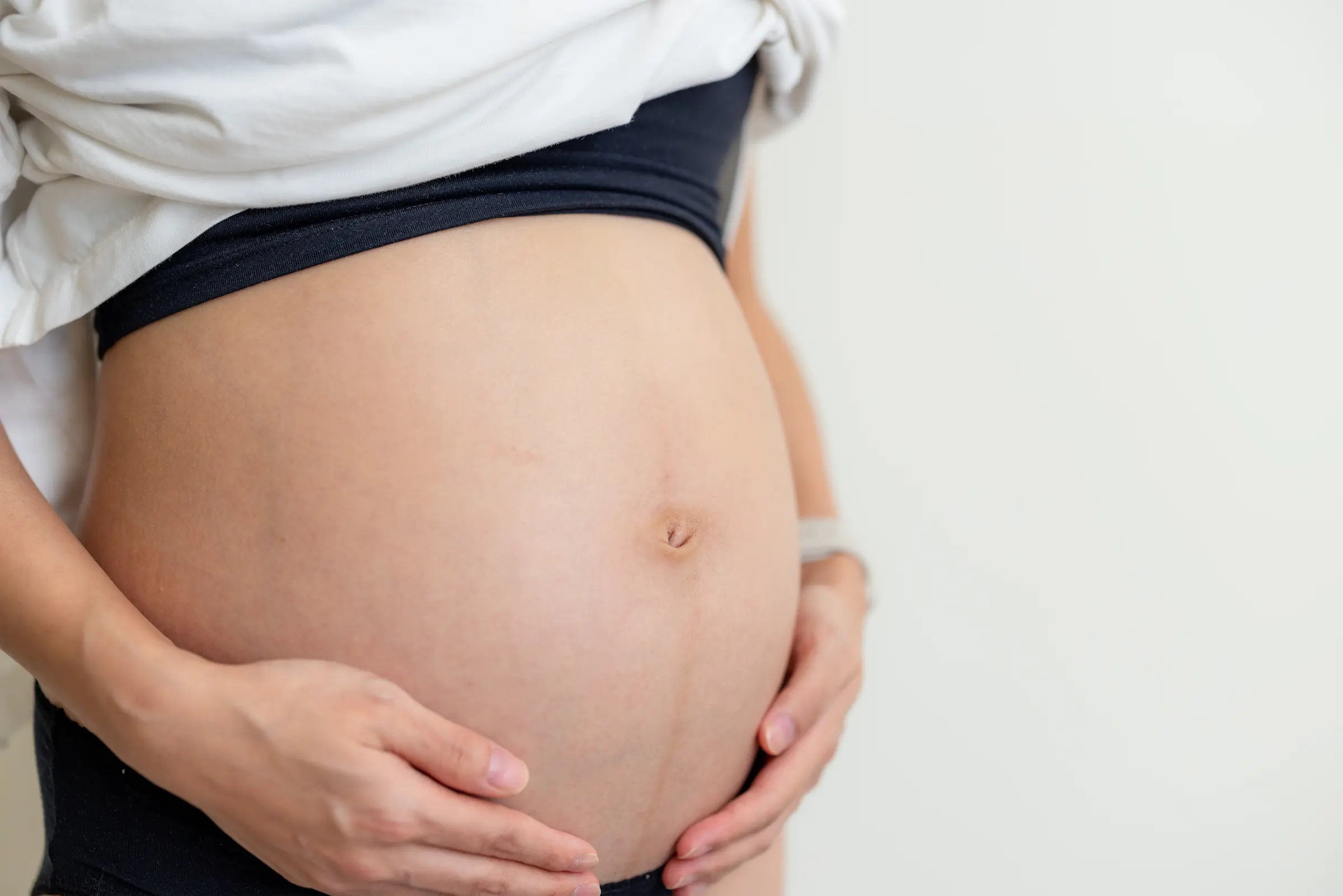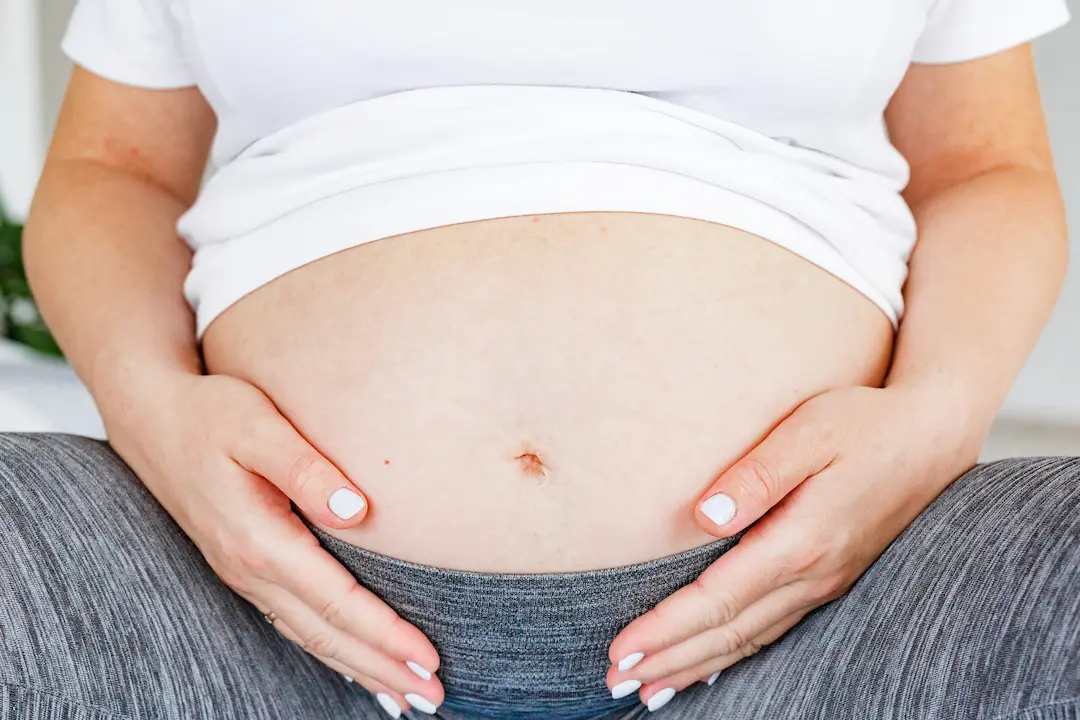
Varicose veins are venous dilations that can cause swelling or a painful sensation. A vulvar varicose vein is a varicose vein that, as its name suggests, is located in the vulva. The numerous changes — especially hormonal — inherent to pregnancy make pregnant women more prone to varicose veins.
Vulvar varicose vein and pregnancy: let’s take a closer look.
What is a vulvar varicose vein?
A vulvar varicose vein is a dilated vein that may appear as a visible swelling on the labia majora. This phenomenon is generally linked to venous insufficiency, in other words, poor blood circulation.
Causes and risk factors during pregnancy
Although vulvar varicose veins can occur at any time in a woman’s life, they are particularly common during pregnancy due to physiological and hormonal changes that occur during this period.
Good to know: vulvar varicose veins most often appear in late pregnancy, but sometimes as early as the second trimester. They can be uncomfortable and sometimes even painful, but they usually disappear spontaneously.
Hormonal changes
During pregnancy, the body secretes more hormones, particularly estrogen and progesterone. These hormones play an important role in fetal development, but they also have a significant impact on the venous system and, therefore, on the potential appearance of vulvar varicose veins:
- Progesterone: this hormone has a relaxing effect on the walls of blood vessels, which can lead to vein dilation. This dilation increases the likelihood of varicosities (the visible manifestation of varicose veins) and venous insufficiency.
- Estrogen: rising estrogen levels during pregnancy can also contribute to vascular dilation by altering the structure of the vessels.
Note also that during pregnancy, your blood volume increases to provide your baby with everything they need. You are therefore potentially more prone to circulation problems.
Increased pelvic pressure
The uterus, which enlarges during pregnancy, exerts additional pressure on the pelvic veins, which disrupts venous return and can lead to the formation of vulvar varicose veins. Here are some contributing factors:
- The weight of the fetus and amniotic fluid increases pressure on the pelvic vessels, which can lead to venous dilation.
- As the uterus grows, it can compress the ovarian veins, making venous return more difficult and favoring swelling in the vulvar area.
- Spending long periods standing can worsen pelvic vein compression, increasing the risk of vulvar varicose veins.

Symptoms and diagnosis
Although generally benign, vulvar varicose veins can cause discomfort and pain during pregnancy. They often present as visible or palpable swelling in the vulvar area, often accompanied by a feeling of heaviness. Some women may experience pain or a burning sensation, especially after standing for long periods. But it is also possible to be completely asymptomatic (lucky you!).
Note that these symptoms may worsen in the evening or in hot weather, when blood circulation is more challenged.
You may also notice the appearance of varicosities (visible superficial veins), which may be blue or purple.
The diagnosis of vulvar varicose veins is mainly based on a clinical examination. Your healthcare professional will begin by assessing your symptoms and performing a physical exam to detect any dilation or compression of the veins. An ultrasound is often used because it allows visualization of the vessels and thus to confirm the presence of varicose veins.
Good to know: ultrasound also allows examination of blood flow, which helps detect or rule out complications such as thrombosis (a blood vessel blocked by a clot).
Want to learn more? Feel free to download the May app, where you’ll find plenty of resources to support and guide you throughout your pregnancy.

How to treat a vulvar varicose vein?
Here are some tips to relieve a vulvar varicose vein:
- Wear support underwear: it provides pressure on the varicose veins and immediate relief from discomfort.
- Wear compression stockings: they exert pressure on the lower limbs, promoting venous return and reducing swelling. They are particularly useful for relieving vein dilation and preventing clot formation. Note that they are often covered by health insurance.
- Change position regularly: avoid standing or sitting for long periods to minimize pelvic vessel compression.
- Elevate your legs: when seated, this facilitates blood circulation.
- Stay active: unless contraindicated by your doctor, feel free to practice gentle physical activity such as walking or swimming to improve venous return and strengthen your venous tone.
- Apply cold: in case of discomfort or swelling, applying cold can provide quick relief. Use a sanitary pad soaked in water and frozen to soothe the affected area. There are also underwear with integrated perineal cryotherapy devices.
For more severe or persistent vulvar varicose veins, medical interventions may be necessary, such as sclerotherapy. Usually performed after childbirth, this procedure involves injecting a solution into the affected vein to make it shrink. It is effective in treating varicosities and improving the appearance of superficial veins.
To prevent varicose veins, you can also:
- Favor wearing loose and comfortable clothing that does not compress. Tight outfits can hinder blood circulation and worsen venous insufficiency.
- Adopt a diet rich in fiber and vitamins C and E to maintain vascular health. Also make sure you stay well hydrated.
Vulvar varicose veins are varicose veins located in the vulva, often presenting with swelling and/or a painful sensation. They are quite common during pregnancy due to physiological and hormonal changes during this period. If you experience discomfort or concern, don’t hesitate to consult your healthcare professional to obtain appropriate treatment and advice.

**
Photos: OlgaGimaeva | leungchopan | AtlasComposer
This text was translated from French by an artificial intelligence. The information, advice, and sources it contains comply with French standards and may therefore not apply to your situation. Make sure to complement this reading by visiting the May US/UK app and consulting the healthcare professionals who are supporting you.




